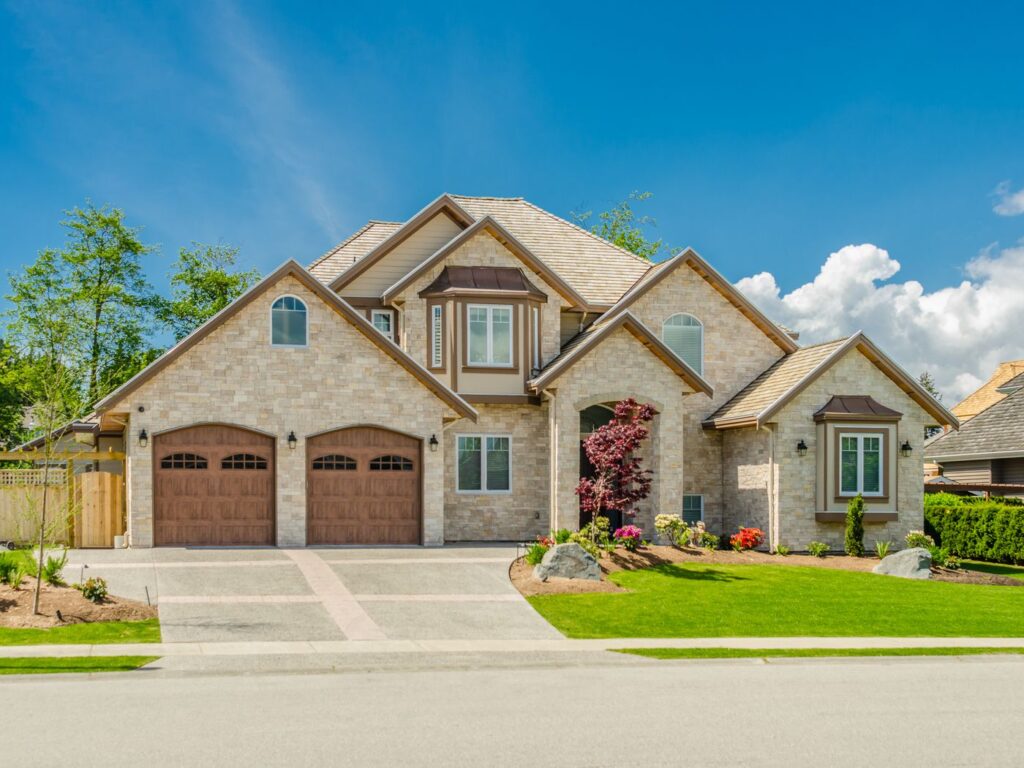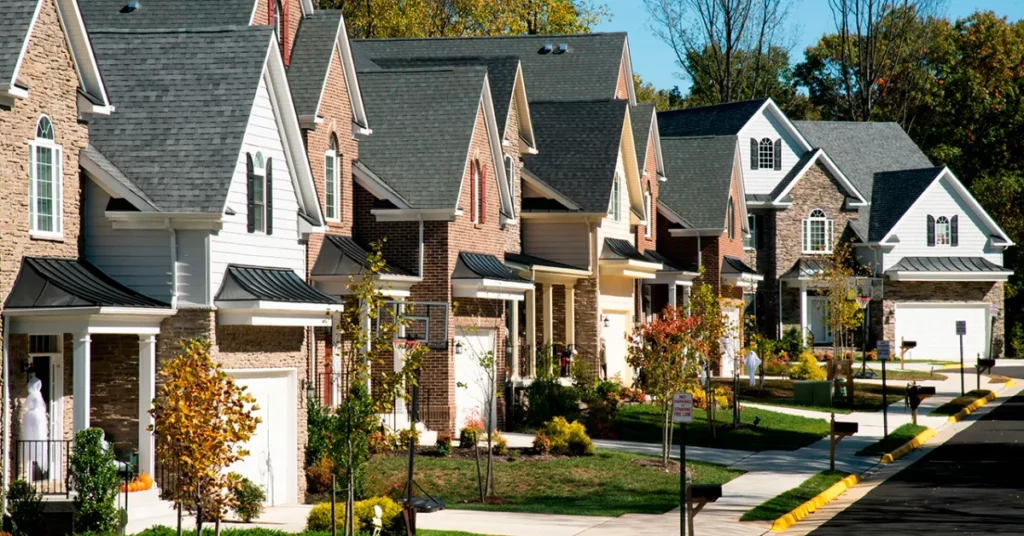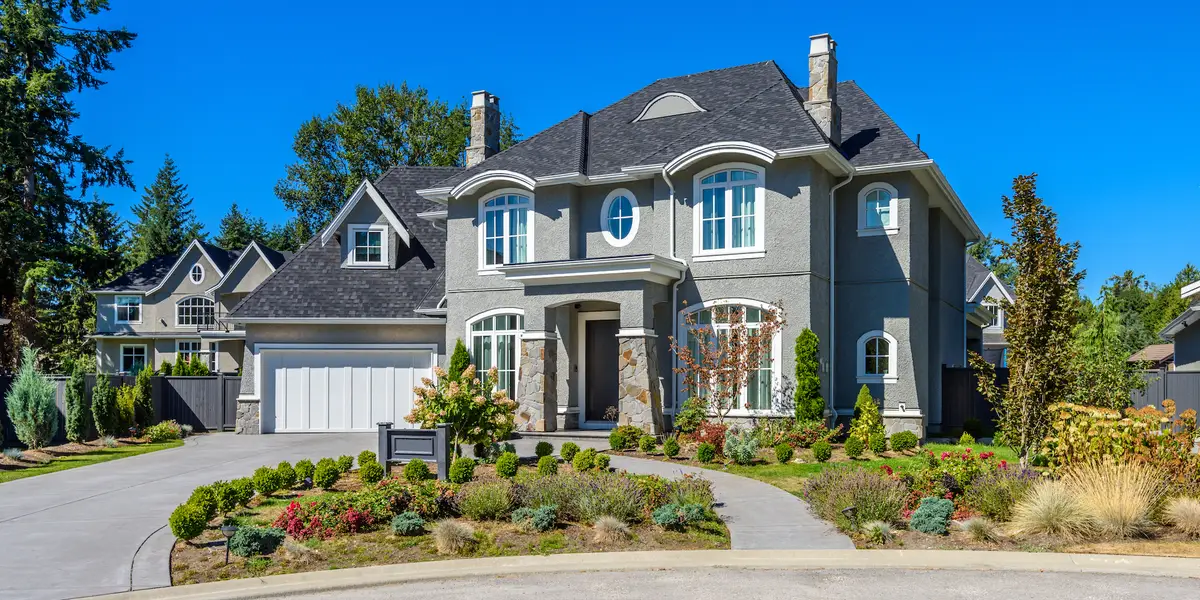As I travel through the United States, I can’t help but notice how huge the houses are here. From tiny cottages to massive mansions, American homes often seem much larger than in other places. I’ve always wondered why that is. So, I decided to explore this and find out why houses in America are so big.
Houses in America are often so big due to a combination of historical, economic, and cultural factors, and preferences. Americans have traditionally associated spacious homes with prosperity and success, and economic growth has allowed for larger living spaces. Cultural ideals, like the “American Dream,” often involve owning a substantial home.
Additionally, practical needs, evolving lifestyles, and architectural trends contribute to the preference for bigger houses. However, it’s worth noting that there is a growing awareness of environmental concerns and a shift towards more sustainable and efficient housing designs.
Why Did American Homes Grow Bigger Over Time? Historical Context

The history of house sizes in America takes us on a journey through time, helping us understand why Americans prefer bigger homes. Back in the early days, when the first settlers arrived, houses were small and simple. They built these houses to serve basic needs because life was tough in the new land.
As America expanded to the west, there was a belief called “Manifest Destiny.” People thought it was their destiny to explore and settle the vast lands. With so much space available, houses began to get bigger. Owning land became crucial, and a spacious home symbolized success.
Then came the Gilded Age, which was a period of great wealth. Industrialists and rich people built enormous mansions to show off their success. These mansions were not just big; they were extravagant. This era set the stage for Americans associating large houses with wealth and status.
After World War II, many soldiers came back, and they wanted houses for their families. Suburbs started growing, and places like Levittown became popular. These suburban homes were designed to be bigger and more comfortable, with yards for children to play in. This marked a shift towards standardized, larger homes as the ideal American dream.
Today, the size of American houses continues to grow. It’s partly because families are getting bigger, and people want more comfort. Popular culture and media also play a role in making big houses seem like a symbol of success.
So, from small colonial houses to today’s spacious homes, you can see how history, the economy, and culture have shaped the American love for big houses. It’s a journey that tells us a lot about what Americans value and dream of in their homes.
Why Do Economic Factors Drive the Size of American Houses?
To understand why houses in America are often large, we need to look at how money matters. After World War II, when the war ended, America experienced a period of big economic success. This time also saw lots of new babies being born, and that’s why it’s called the “Baby Boom.” Families were growing, and they needed more space. People felt confident about owning homes because the economy was doing well.
This is when suburbs started to become popular. Suburbs are neighborhoods outside the big cities. They were designed to be like small towns with houses, yards, and a sense of community. Places like Levittown were famous because they had houses that looked the same, were bigger than city homes, and had all the modern stuff families wanted.
The way houses were built also changed. The idea was to make them quickly and affordably. It was like how cars were made on assembly lines. This made it possible for more families to buy bigger homes. When the economy is doing well, and interest rates are low (interest is extra money you pay when you borrow), it’s easier for people to buy big houses because the monthly payments are not too high.
But it’s not just the economy; sometimes, people want more things. When they have more money, they might want a bigger house with more rooms, like a fancy kitchen, or a big backyard. It’s like a way of showing off success. This is why sometimes Americans like having big houses.
In summary, money has a big say in how big American houses are. After the Second World War, when there was a lot of money, families got bigger, and suburbs with large, affordable houses became popular. It was like building cars on an assembly line, making it easier for more people to buy big homes.
Why Do Americans Prefer Larger Homes? Cultural Influences
The size of houses in America is not just about what’s practical or affordable—it’s closely tied to what people in the United States value and want in their homes. This part of the article will look at how culture, which means the shared beliefs and customs of a group of people, plays a big role in making Americans like bigger houses.
One reason why Americans often prefer larger houses is something called the “American Dream.” This dream is all about the belief that anyone, through hard work, can achieve success and prosperity. Owning a house, especially a big one with a nice yard, is a big part of this dream. This idea goes way back in American history when owning land meant freedom and independence.
TV shows, movies, and ads also have a big say in what people think is a good home. They often show big, beautiful houses as the ultimate goal. These images make people believe that a big house means a better life. Famous people and their large homes also play a role. People see these celebrities and think, “I want a house like that!”
Surely, there are practical reasons too. Big houses give families more space to do things like have friends over, enjoy hobbies, or just relax without feeling cramped. This desire for space reflects the American belief in individualism and independence.
Sometimes, it’s not just about the house itself, but also about where it’s located. Certain neighborhoods are famous for having big, impressive houses. Living in these areas can be seen as a sign of success. So, people often want big houses not just for themselves but also to show others that they’ve made it in life.
Why Do Americans Need Larger Houses? Exploring Practical Necessities
One of the most practical reasons behind the preference for larger houses in America is the changing dynamics of families. As families grow, whether through the birth of children, extended family members moving in, or other reasons, the need for more space becomes evident. Larger homes can offer separate bedrooms for each family member, creating a sense of privacy and personal space that is crucial for harmonious family living.
Additionally, these extra rooms can serve as home offices, playrooms for children, or guest accommodations, making the house more versatile and accommodating to evolving family needs.
In recent years, multi-generational living has become more common in the United States. This often involves grandparents, parents, and children living together under one roof. In such cases, a larger house is not just a preference but a practical necessity to provide each generation with their living space and maintain a peaceful coexistence.
The rise of remote work and online learning has also contributed to the demand for more space within homes. Many Americans now require dedicated home offices or study areas, which often necessitate larger houses to accommodate these work and learning spaces. In this practical sense, a bigger home can enhance productivity and provide a quiet, focused environment.
Another practical aspect of larger homes is storage. Americans tend to accumulate possessions over time, and having ample storage space is essential for keeping homes organized and clutter-free. Larger houses often offer more closets, cabinets, and storage areas to meet these needs.
Practicality extends to social aspects as well. Americans often enjoy hosting gatherings, parties, and family events. Larger houses with spacious living areas and open layouts are better suited for entertaining, allowing guests to move comfortably and enjoy themselves.
Lastly, larger homes provide room for hobbies and recreational activities. Whether it’s a home gym, a craft room, a home theater, or a game room, these additional spaces cater to various interests and activities that enrich the lives of homeowners and their families.
Why Do Architectural Trends Impact the Size of American Houses?
The way American houses look and how big they are often depends on what’s trendy in architecture. As time has gone by, different styles of architecture have left their mark on homes. A long time ago, houses were simpler, like colonial or Victorian styles. But as tastes changed, houses became more complex. Styles like Craftsman, Tudor, and Colonial Revival brought in bigger rooms and fancier details. They set the stage for the idea that American homes should be spacious and look beautiful.
In recent years, a trend called “open-concept living” has become really popular. This means that walls between the kitchen, dining area, and living room are removed, creating one big space. It makes homes feel bigger and makes it easier for people to be together. This trend has driven the demand for larger and more open homes.
Modern and minimalist designs are also influencing the size of American houses. They often include features like big windows, high ceilings, and open spaces, all of which make homes feel more spacious and airy.
People today like homes that are personalized to their tastes. Architects and builders are designing houses with special features and extra rooms to match what people want. This can make homes larger and more unique.
And lately, there’s a growing interest in sustainability and energy efficiency. Some homes are designed to be smaller but smarter, with features like better insulation and solar energy. These houses prioritize being eco-friendly over being big.
So, when we think about American houses and their size, we have to consider how architecture has changed over time. From classic styles to open layouts and modern designs, each trend has played a part in shaping the homes we live in today.
What Will Drive Future Changes in American House Sizes?

Thinking about how American homes might change in the future is pretty interesting. There are several things to consider.
Changing Demographics: As time goes by, there will be more single-person households and smaller families. This means that people might want smaller houses that are easier to take care of.
Environmental Concerns: People are becoming more aware of the environment, and that will impact the kind of houses we build. Future houses are likely to be eco-friendly and use less energy. They might be smaller but very good at saving energy and being friendly to the planet.
Lifestyle Preferences: People’s lives are changing, and that will influence the size of homes. Young professionals and older folks whose kids have moved out might prefer smaller homes that are easy to move around in. These homes will suit their modern, on-the-go lifestyles.
Sustainability: Future homes will focus on sustainability, using materials and designs that are good for the environment. This might lead to smaller homes, but ones that are more efficient and eco-friendly.
Technological Advancements: Smart technology will play a big part in future homes. From energy-efficient systems to home automation, technology will make homes more comfortable and convenient. Even if homes are smaller, they will be super-smart.
Modular Construction: Building houses in sections and then putting them together on-site, called modular construction, could become more popular. This method is efficient and can result in well-designed smaller homes.
Urban Living: In crowded cities, where space is limited, smaller homes like apartments and townhouses are likely to be the norm. They make better use of available space.
So, in the future, we might see smaller, more eco-friendly, tech-savvy homes that fit the changing needs and priorities of people.
FAQ
Are American houses bigger than the UK?
American houses tend to be larger on average compared to those in the UK. The size difference can be attributed to various factors, including available land space, cultural preferences, and historical trends in home design.
How big is a normal house in America?
The size of a “normal” house in America can vary significantly depending on the region and urban or rural location. On average, single-family homes in the United States are around 2,500 to 2,700 square feet, but this can vary widely. Some areas may have larger or smaller average house sizes.
Are houses cheaper in the UK or the US?
The affordability of houses in the UK versus the US varies depending on location and market conditions. Generally, some parts of the US may have lower housing costs compared to certain areas in the UK, while other regions may have higher prices. It’s essential to consider specific locations when comparing housing affordability.
Are American houses as big as they are in the movies?
Houses depicted in movies can vary greatly, but they often portray spacious and well-appointed homes, which may not necessarily reflect the average American house. While some homes in the US are quite large, many are more modest in size.
How are Americans able to afford such big houses?
Americans can afford larger houses through various means, including mortgages, down payments, and access to credit. The ability to purchase a bigger home depends on factors like income, savings, and financial planning.
What % of Americans own multiple homes?
The percentage of Americans who own multiple homes, also known as second homes or investment properties, varies but is estimated to be around 6-7% of all households. Ownership of multiple homes can be influenced by factors like income, investment opportunities, and personal preferences.
Final words
In conclusion, it’s clear that the size of houses in America has been shaped by a complex interplay of cultural, economic, and practical factors. The American dream, architectural trends, and changing demographics have all contributed to the love for spacious homes.
However, it’s essential to remember that bigger doesn’t always mean better. While ample living space can provide comfort and room for various activities, it’s crucial to consider the environmental impact and the changing needs of modern living.
Ultimately, the size of one’s home should align with their lifestyle, values, and sustainability goals. So, when pondering the question of why American houses are so big, it’s worth reflecting on whether bigger truly serve our needs or if it’s time to rethink what makes a house a home.








